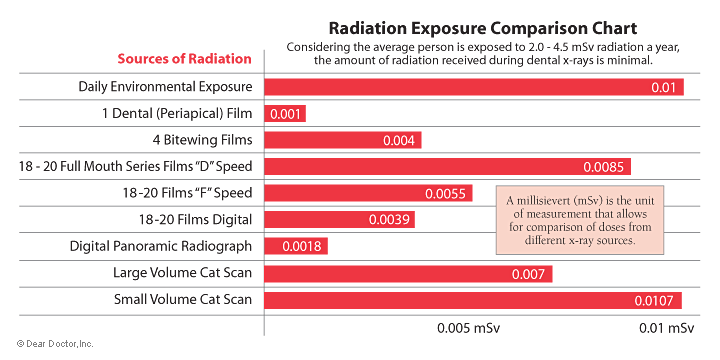If you have tuned in to many sources of media this week, you may have heard news on recent studies linking dental Xrays to benign brain tumors.
The research was confusing and poorly executed, “They found a small risk (from) a pair of bitewings, but not a full mouth series, which is multiple bitewings. That inconsistency is impossible to understand to me,” said Dr. Alan Lurie, president of the American Academy of Oral and Maxillofacial Radiology
The statement added, “The ADA’s long-standing position is that dentists should order dental X-rays for patients only when necessary for diagnosis and treatment. Since 1989, the ADA has published recommendations to help dentists ensure that radiation exposure is as low as reasonably achievable.”
Patients should be concerned whenever they are exposed to radiation, but it’s important to emphasize that this concern should not mean that we shouldn’t get X-rays at all.
The take home message is that “while dental X-rays are an important tool in well selected patients, efforts to moderate exposure to (ionizing radiation) to the head is likely to be of benefit to patients and health care providers alike.” The risk of missing easily diagnosable dental diseases when treatable in early stages outweighs the small exposure to radiation, especially with digital (minimal dosages) radiography as we provide at Dr Vasilakis’ office.
Below is a chart that illustrates exactly how little radiation is emitted from dental Xrays relative to activities in every day life.


 Dr. Maria is a Restorative Dentist in Brighton, MA. She holds a B.A. in Zoology from Miami University, and received her DMD from Case Western Reserve University School of Dental Medicine. She has a passion for her career, and is a third generation dentist in her family.
Dr. Maria is a Restorative Dentist in Brighton, MA. She holds a B.A. in Zoology from Miami University, and received her DMD from Case Western Reserve University School of Dental Medicine. She has a passion for her career, and is a third generation dentist in her family.
Thanks for sharing this information. I am excited to learn about the results of dentists in Peterborough. I hope to know more about them soon.